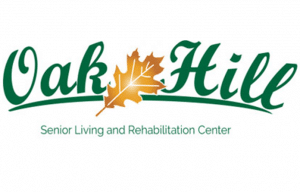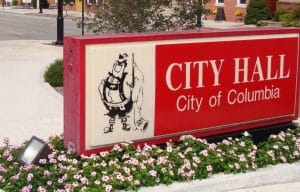Waterloo School Board OKs budget
The Waterloo Community Unit District 5 Board of Education unanimously approved the district’s 2018-19 budget at Monday’s board meeting.
“This is our best guess of forecasting revenues for this year,” Waterloo Superintendent Brian Charron stressed during the public hearing on the budget, during which no citizens spoke.
The budget predicts the district will have $28,951,450 in revenue and $28,750,380 in expenditures this school year. That means that, overall, the district will have a budget surplus of more than $200,000.
“We put our budget together from a conservative perspective where we try to plan on the revenue that we think that we can count on and the expenditures that we think we might incur,” Charron said. “There will be things that come up from time to time that have an impact on this, but we try to present a budget that’s more of a worst case scenario.”
Charron said the budget was challenging to assemble this year because the district still has not received word from the county on what to expect in property tax revenue because the property assessments are late.
The Waterloo school district receives 76 percent of its budget from property taxes. That totals almost $22 million.
“Starting tomorrow, I’ll start working on the cash flow side of this,” Charron said. “And I’ll probably be coming back to you in October with an idea of what we’re going to borrow, when we’re going to borrow, when current money runs out, whether we should be cashing out investments and forfeiting the interest we would have earned or whether we should seek tax anticipation warrants from the local bank.”
Without the numbers from the county, Charron said the budget estimates a 2 percent increase in equalized assessed value. That number is conservative as it was more than 2 percent last year and the district saw more growth in 2018, with about 75 new homes being built.
“I’m hoping (the EAV increase) is close to 3 percent,” Charron noted. “If it’s anything less than 2 percent, then this budget is blown.”
Charron also pointed out that while the budget overall is balanced, the district is in the red by more than $400,000 in the educational fund and $600,000 in the operations/maintenance fund.
Charron said there were two explanations for that, one of which is growth in the district. The district grew by 61 students this year.
“When a family builds a home in our community, we have to start educating their children right away,” Charron explained. “But it’s going to be a year to a year and a half before they start paying property tax on that home.”
The delay between building a home and the district getting its money is due to the property tax assessment schedule and the district’s tax levy schedule.
The other reason the district is in the red is because it is consciously overspending to keep education quality high.
It can do so because the district has saved up more than $3 million in the educational fund and almost $1.4 million in the operations/maintenance fund.
“We’re OK with overspending because we don’t want our class sizes to go up,” Charron said. “We’re just hopeful that over time we’ll control our spending while local and state spending improves. If over time this balance starts creeping toward zero, we’ll have to get tighter and might have to cut some educational programs.”
According to state law, if a school district is overspending in any area by more than one-third of the balance on hand, then it must submit a three-year budget to the state with a plan to get spending under control.
“We are not even close to having to do that, while we are overspending,” Charron said. “Some of that overspending is due to having to add teachers because of additional students. Some of it is because of having to adjust payroll after negotiations. I do not feel like we are in panic mode.”
The other highlight of the board meeting came when Gardner Elementary School Principal Dawn Ivers brought up the idea of having a playground at her school.
Each year, she has students complete a survey and one of the most popular responses every year is the students want a playground.
The school does not have one because it was originally a junior high school. Currently, it has only three swing sets and three slides.
Ivers proposed a playground that costs about $38,000, not including labor. It can have 81-94 children on it at once. There can be approximately 200 of the 439 student body at Gardner at recess at one time.
The budget the board approved includes the cost of the playground in the case the board approves the project.
Charron and Ivers will discuss the project further, including the possibility of district employees assembling the playground, before bringing it to the board for a vote.
Charron offered his support of the idea.
“I do think it’s a worthwhile expense for our children,” he said.






